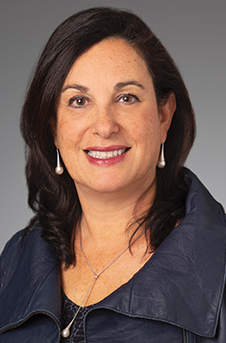Sigal Zarmi joined Morgan Stanley as head of transformation in October 2018, from the role of global chief information officer (CIO) at professional services firm PwC. However, she is well acquainted with the world of financial services, having spent several years in CIO roles at GE Capital.
What interested her in the role at the US investment banking giant is the size and scope of the transformation. Morgan Stanley’s technology organisation is 15,000 strong and commands a sizeable budget – upwards of $4bn.
“The scale is challenging because we are transforming how we work within technology, how we deliver solutions and become more customer focused, as well as changing the way we interact with our businesses and encourage their involvement in defining, designing and delivering digital solutions for our internal teams and customers,” she says.
At PwC, Ms Zarmi led a large transformation programme with 275,000 people in 157 countries, which was “very global and very bespoke”. She says that leading a transformation through a fragmented organisation taught her how to "influence and drive change".
Career history: Sigal Zarmi
- 2018 Morgan Stanley, head of transformation
- 2014 PwC, global CIO
- 2010 GE Capital, CIO – GE Capital Americas
- 2008 GE Capital, CIO and quality leader, GE Corporate Financial Services
Driving innovation
Morgan Stanley already has an important prerequisite: a good culture. There is a strong partnership between business and technology, and its core values around leading with exceptional ideas “ensures that we drive innovation and entrepreneurial culture [while] thinking about how we can stay in front of disruption”, says Ms Zarmi.
Through its centres of excellence (CoEs), Morgan Stanley focuses on driving specific innovation areas, such as artificial intelligence and machine learning, data, public cloud and agile development. “In the CoEs we are exploring how we can accelerate our move to public cloud, or using DevOps methodology and automation at scale. We have begun to work differently in a much more agile, flexible environment, so we have created systems and structures to help us accelerate the change and transformation,” she says.
“The CoEs are setting the strategy and identifying where we want to focus first, how we drive the culture of innovation and entrepreneurial spirit, and where we need to embed that kind of thinking within the organisation. And, lastly, how we measure the successes.”
Ms Zarmi expects the CoEs to evolve in future, as emerging technologies mature and new methodologies develop. “We need to flex up and down to understand what is going to be the next innovation,” she says. “Importantly, we don’t want transformation to just happen in the centre but across the organisation – and my role is to influence the whole organisation.”
Continuous advance
Day to day, Ms Zarmi and her 400-strong team are working on accelerating the bank’s transformation. Her specific focus is not only looking at the acceleration of specific technologies and methodologies, but workforce strategies. “This includes the workplace evolution: what skillset do we need for the future, where do we need that skillset to be, how do we recruit, retain and track the skillset, and how do we make sure that it is diverse and high performing, with the leadership development and training that needs to go along with that,” she says.
Ms Zarmi is also focused on how to move faster into the public cloud, leverage it and make sure Morgan Stanley gets the value out of it. “We are not just moving to the cloud for the sake of it, we are leveraging the strength of cloud,” she says. “We are looking at getting everyone working in an agile way with continuous deployment and delivery. We need to be able to develop software, increase productivity and reduce development cycle time in collaboration with our business partners.”
Transformation is all about continuous improvement and reinvention, according to Ms Zarmi, particularly considering the pace at which technology is shaping different industries, including financial services. Morgan Stanley has a long history of working with start-ups in both financial and technology spaces – it has been running its TechWeek & CTO Innovation Summit since 2001.
But to move at the speed of a start-up is challenging. “You must have the right entrepreneurial culture and create small, self-directed, self-sufficient teams that are empowered and authorised to make decisions,” says Ms Zarmi. “The strength of a start-up is the faster decision-making, whereas in large organisations innovation is slowed down by bureaucracy.”
She is clear that such a foundational transformation does not happen overnight. “There must be the right leadership buy-in at the top to support that,” she says. “The hardest thing to transform within an organisation is the culture. How do you convince people that there is something in it for them to work in a different way? You need to reach their hearts and minds – and this is something that requires a lot of focus and attention.”




